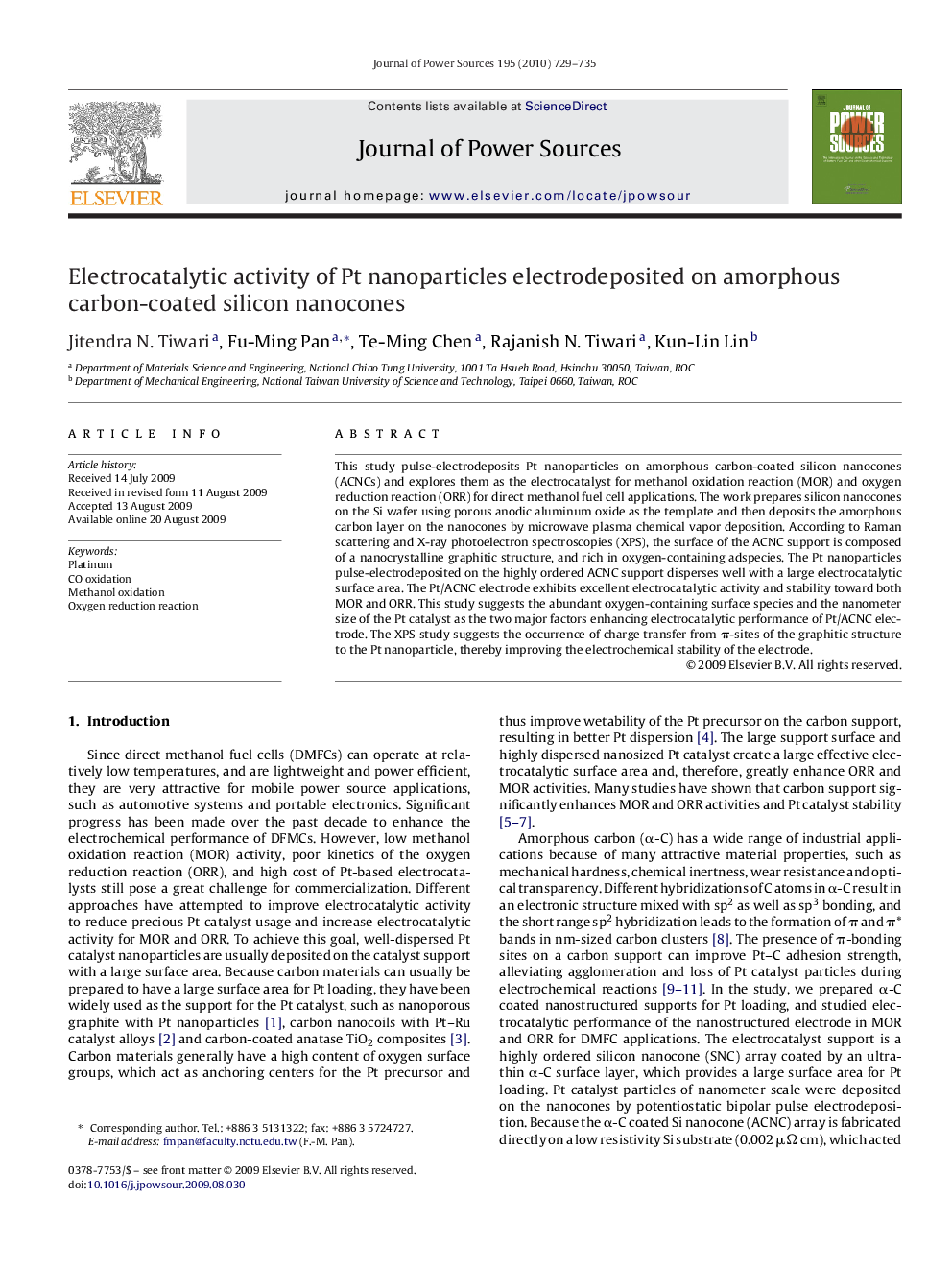| Article ID | Journal | Published Year | Pages | File Type |
|---|---|---|---|---|
| 1289304 | Journal of Power Sources | 2010 | 7 Pages |
This study pulse-electrodeposits Pt nanoparticles on amorphous carbon-coated silicon nanocones (ACNCs) and explores them as the electrocatalyst for methanol oxidation reaction (MOR) and oxygen reduction reaction (ORR) for direct methanol fuel cell applications. The work prepares silicon nanocones on the Si wafer using porous anodic aluminum oxide as the template and then deposits the amorphous carbon layer on the nanocones by microwave plasma chemical vapor deposition. According to Raman scattering and X-ray photoelectron spectroscopies (XPS), the surface of the ACNC support is composed of a nanocrystalline graphitic structure, and rich in oxygen-containing adspecies. The Pt nanoparticles pulse-electrodeposited on the highly ordered ACNC support disperses well with a large electrocatalytic surface area. The Pt/ACNC electrode exhibits excellent electrocatalytic activity and stability toward both MOR and ORR. This study suggests the abundant oxygen-containing surface species and the nanometer size of the Pt catalyst as the two major factors enhancing electrocatalytic performance of Pt/ACNC electrode. The XPS study suggests the occurrence of charge transfer from π-sites of the graphitic structure to the Pt nanoparticle, thereby improving the electrochemical stability of the electrode.
